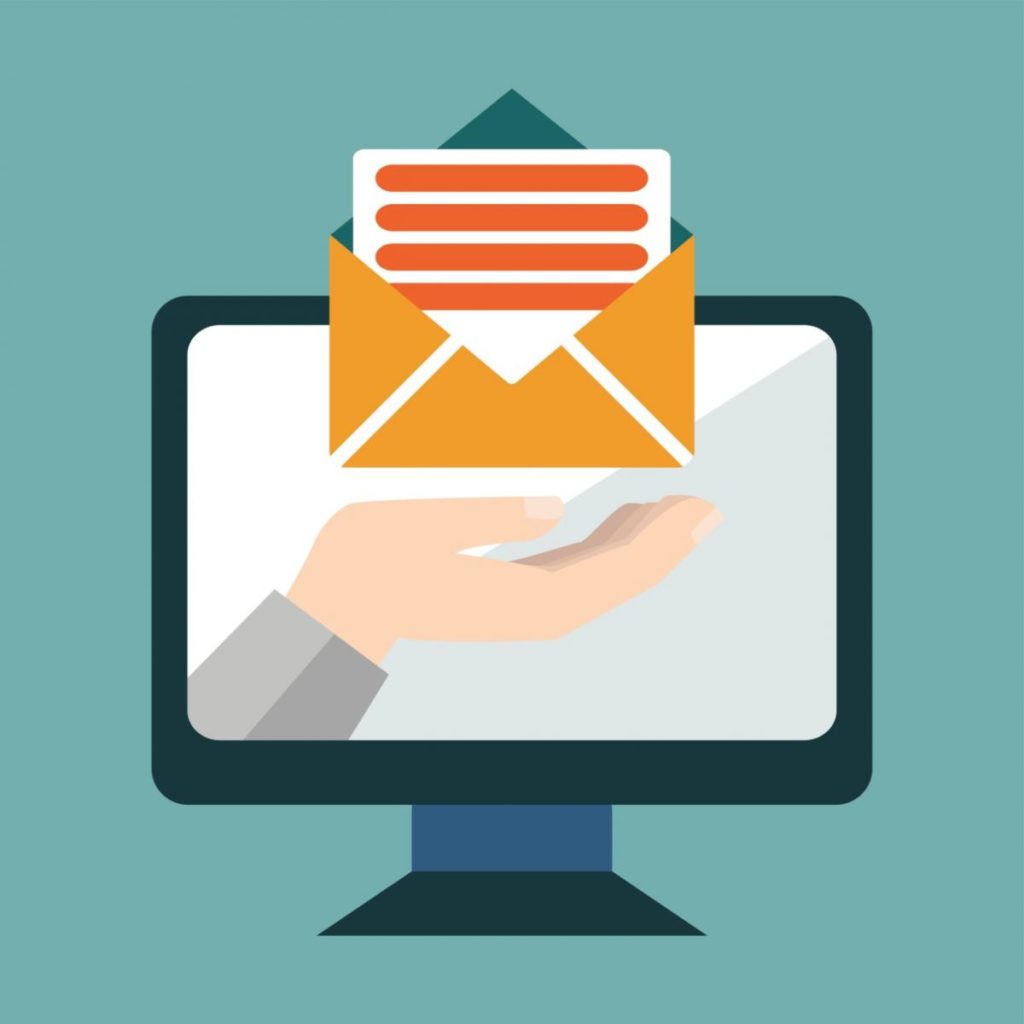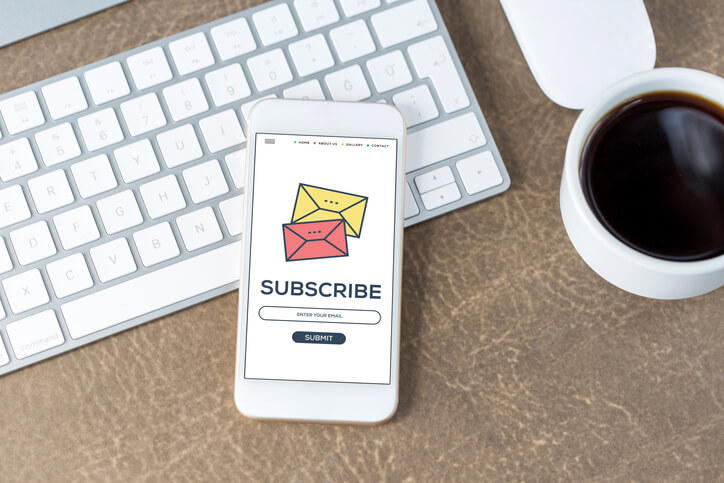Keeping your customers and prospects engaged with your emails can be a challenge for any marketer. If you are using email in your marketing mix, you know that click-throughs is extremely important. In fact, in a study by Ascend2, 73% of marketers rated the click-through rate as the most useful metric for tracking email performance.
Average click-through rates vary by industry. To see how your rates stack up, check out this comparison study chart by Constant Contact. If your email performance is not on track, here are 6 strategies to help get your subscriber list engaged and clicking-through.
1) Optimize for Mobile
First and foremost, if you aren’t designing your emails for mobile devices, chances are that your message is not getting the attention it deserves. Mobile-friendly design is the most crucial component for successful mobile email marketing. In fact, 80% of users will delete an email if it does not look good on their mobile devices, according to Blue Hornet.

According to research by MailChimp, responsive email design, which adapts to different devices and screen sizes, gets higher click rates on all devices. They are particularly effective for mobile users, where the increase in unique clicks from 2.7% to 3.1% represents a 15% increase in actual clicks.
2) Complete Email Personalization is Coming Soon
Econsultancy asked marketers: “What do you think the single biggest to change to email marketing will be, when looking ahead 5 years. According to the survey, the top 3 responses of those who strongly agreed or somewhat agreed included:
- 84% – Email will be fully integrated with other marketing channels
- 76% – All email communication will be completely personalized
- 74% – Email will still be one of the highest channels for delivering ROI
Email personalization reduces unsubscribe rates and has a major impact on boosting revenue. A report by Silverpop found that 50% of consumers unsubscribe from an email list due to irrelevant emails. This impact of unsubscribes adds up to a loss of 60% in future lifetime value (LTV) (AgilOne). However, when emails are personalized, the average click-through rate is 2.5 times higher with an average increase of 5.7 in revenue.
3) Use Video
Video marketing has grown tremendously in the past few years. According to an eMarketer report, four times as many consumers would prefer to watch a video about a product or service as opposed to reading about it.
Using videos in email can really boost click-throughs. It’s been estimated that videos in email marketing messages increase click-through rates by as much as 3x and can boost a company’s return on investment by 40%.
Before adding videos to all your email campaigns, remember that not all email clients support the ability to play the video right in the inbox. HTML 5 (the newest version of HTML) offers more options where video is concerned, but there are still limitations dependent on your subscriber’s email host. A great way to give the illusion of video in email is to use an animated GIF which links to the full clip.
4) Include a Clear Call To Action (CTA)
Did you know that emails with a single call-to-action increase clicks 371% and sales $1,617? (WordStream). And when you take the time to optimize them, your click-through rates can soar. Check out these stats about the benefits of optimizing CTAs:
- HubSpot found that anchor text CTAs increased conversion rates by 121%. Between 47% and 93% of a post’s leads ONLY come from anchor text CTAs. 83% to 93% of each post’s leads come from anchor text AND internal link CTAs.
- ContentVerve saw a 90% increase in click-through rate by using first-person phrasing: “Start my free 30 day trial” vs. “Start your free 30 day trial.”
- Helzberg Diamonds saw a 26% increase in clicks by adding an arrow icon to their CTA buttons. (Marketing Tech Blog)
- SAP found that orange CTAs boosted their conversion rate over 32.5%. (QuickSprout)
- Performable found that red CTAs boosted their conversion rate by 21%. (QuickSprout)
- Making CTAs look like buttons created a 45% boost in clicks for CreateDebate. (Copyblogger)
- Personalized CTAs convert 42% more visitors into leads than untargeted CTAs. (HubSpot)
- Neil Patel found that users prefer to learn about the offer before clicking a CTA– placing his CTA above the fold decreased conversions by 17%. (QuickSprout)
- Reducing clutter around their CTA increased Open Mile’s conversion rate by 232%. (VWO)
- FriendBuy increased signups by 34% by adding anxiety-reducing content and explaining key benefits next to their CTA. (Copyblogger)
With all these interesting insights, it may be tempting to give the all a try at once, but remember that perfecting your CTA’s will take time. It’s best to include only one clear call to action per email and in some instances a secondary, lower urgency, CTA in case the subscriber is not ready to engage with the main CTA. Keeping emails short, sweet, and to the point will help prevent your subscribers becoming distracted or overwhelmed.

As for call to action placement, the best position will vary based on your content. Traditional opinion is that it’s best to place your CTA above the fold to reduce the need for scrolling, but as seen in the QuickSprout statistic above, some users need more of an explanation about the offer before following through. An offer for “10% off of your next order” is self-explanatory and would benefit from being above the fold, but “fill out this form” may need some more details to support it. In the end, taking the time to test your CTA’s to see what produces the best results in your email campaigns is the only truly effective way to optimize your campaigns.
5) Drive Results with Triggered Emails
Triggered email marketing, or event driven emails, allows marketers to automatically send messages that are relevant, timely, and personalized to the individual. These emails are different from typical business as usual emails such as a newsletter or product announcement. Rather they are based on a particular action or behavior a consumer has taken, such as clicking on a website link, adding something to a shopping cart, or even a personal message for a birthday.

Triggered email campaigns produce 406% larger click-through rates than typical campaigns. Triggered campaigns, according to a report by Yesmail, generally fall into the following categories:
- Lifecycle triggers:These messages speak to a customer’s current relationship with the brand and are tailored to the particular stage of her lifecycle – from a new subscriber, to regular opener, first-time purchaser, or a lapsed buyer. Lifecycle triggers include welcome, anniversary, activation, reactivation, birthday, loyalty campaigns, and more.
- Transactional triggers:The primary purpose of these emails is to notify consumers of movement on their accounts. Due to off-the-charts open rates, transactional triggers present a major opportunity for marketers to build brand loyalty. They include purchase/shipping confirmations, account notifications, returns, refunds, backorder notifications, and more.
- Remarketing triggers:These campaigns are designed to grow email revenue exponentially and are largely informed by consumers’ purchase and browse behavior. They include abandoned cart, browse abandon, cross-sell/product recommendation emails and more.
- Real-time triggers:These emails can either fall under another trigger category or stand on their own. They incorporate additional data points like location, weather, or events to make communications relevant. This trigger category is generally not as widely adopted as the other three.
6) Be Relevant, Concise, and Clear
Make sure you are giving your subscribers a reason to open your email and engage. By sticking to one clear message, you are more likely to encourage your readers to read your email and ultimately, click through.
Keep copy to a minimum – your readers are bombarded with emails and simply don’t have time to read long emails. Also include plenty of white space and use pictures sparingly.
It’s important to resist the urge to add more in the hopes that at least something will get your readers to click through. Consider the objective of the email, write copy around that objective, and then highlight your CTA.
Like every marketing channel, email must be tested regularly and continually optimized to boost engagement rates. These tips will help you get started to higher click throughs, increased conversions, and an email marketing strategy that get results.




